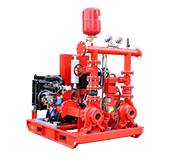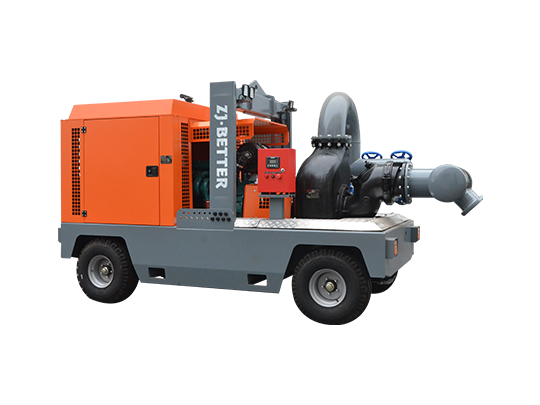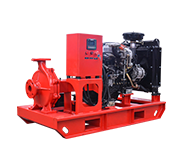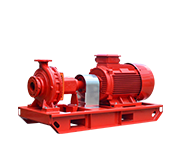Why is a fire pump doesn't work after starting? There may be the following situations:
1. There is a phenomenon of air binding
The air remaining in the pump casing is not evacuated before the centrifugal fire pump is started. Since the air density is much smaller than that of water, although the impeller rotates at a high speed after starting, the suction port cannot form enough negative pressure, so that the liquid cannot be sucked into the pump. inside the pump casing. If there is a leak in the suction line, air trapping will also occur during the operation of the pump.
2. The pump casing is not filled with liquid
After the centrifugal fire pump stops the pump, the liquid in the pump casing is not emptied, and it does not start for a period of time. When it is restarted, the suction pipeline and the bottom valve are not tightly closed, resulting in the leakage of the liquid in the pump casing. Failure to discover in time that the pump casing is not filled with liquid, resulting in the failure of the fire pump to work normally;
3. The suction pipe does not extend below the liquid level
When the centrifugal fire pump is started, especially the centrifugal pump installed on the fire truck, the suction pipe connected to the pump is not inserted below the liquid level of the fire water tank or other water storage facilities, resulting in the failure of normal water output after the pump is started.
4. The outlet valve is not opened after the pump is started
After the pump is started normally, the valve on the outlet pipeline should be slowly opened until the rated flow parameter is reached. If the operator fails to open the water outlet valve in time due to negligence or lack of necessary training, and fails to open the outlet valve in time, the fire extinguishing agent cannot be delivered normally.
5. The impeller of the pump is reversed
Centrifugal fire pumps are often driven by electric motors. If the positive and negative poles of the motor are reversed, the impeller of the pump will be reversed, especially for newly installed or repaired or replaced pumps. The impeller of the pump is reversed, the suction port cannot form a certain vacuum, and the liquid cannot be pressed to the outlet pipeline, so the liquid cannot be inhaled and discharged normally after startup.
6. There are defects in the design of the pump inlet and outlet pipelines
The diameter of the suction and pressure pipes connected to the pump should match the performance parameters of the pump, usually the suction pipe diameter is slightly larger than the pressure discharge pipe diameter. If the design of the pump outlet pipeline is not reasonable and the diameter is too large, the output flow of the pump will not meet the process requirements, thus affecting the normal output of the pump. When the resistance of the suction pipeline is too large, although the vacuum gauge of the suction pipeline of the fire pump has a large degree of vacuum, the pump cannot inhale liquid, resulting in no liquid flowing out of the extrusion pipeline. If the resistance of the extrusion pipeline is too large or the rotation of the impeller is blocked, although the pressure gauge of the extrusion pipeline of the fire pump has pressure, there will be no liquid discharged from the extrusion pipeline.
7. The filter screen, bottom valve or impeller are blocked
The filter screen is to prevent impurities from being sucked into the pump and cause the pipeline, impeller, etc. to be blocked or worn; the bottom valve is a one-way valve to prevent the liquid from flowing out of the pump along the suction pipe. If there is blockage in the filter screen, bottom valve or impeller, etc., it will also cause the pump to start, but no liquid will be sucked in, and no liquid will be pressed out.









